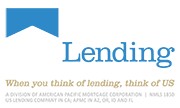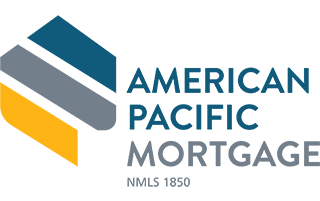What Is A Conventional Loan And Why Is It Common?
 As a homebuyer, you’ll likely take out a home loan unless you have enough money in the bank to pay for a house outright. Since few people have this kind of money on hand, a mortgage is the most common way to buy a house. However, there are many different types of home loans to choose from as well as different lenders to consider. When it comes to choosing a home loan, the most common type is the conventional loan.
As a homebuyer, you’ll likely take out a home loan unless you have enough money in the bank to pay for a house outright. Since few people have this kind of money on hand, a mortgage is the most common way to buy a house. However, there are many different types of home loans to choose from as well as different lenders to consider. When it comes to choosing a home loan, the most common type is the conventional loan.
What Is A Conventional Loan?
Conventional loans are loans provided by private lenders, like banks. Unlike other types of loans, conventional loans are not backed by any kind of government agency. Instead, the lender sets its own guidelines for the loan. Some private lenders do end up selling their home loans off to Fannie Mae (Federal National Mortgage Association) or Freddie Mac (Federal Home Loan Mortgage Corporation), which are the two biggest mortgage loan buyers in the country. Private lenders who do this must adhere to the lending requirements established by Fannie Mae and Freddie Mac.
Conventional Loan Requirements
Because conventional loans aren’t insured by government agencies, there’s more risk involved for private lenders. Although they can still foreclose on a property, they could potentially lose money if they are unable to recoup the money still owed on the loan through a sale. This means that there are a number of requirements you’ll need to meet in order to be deemed worth the risk, including these:
Credit
Your credit score provides lenders with a basic overview of how creditworthy you are. Low credit scores signal that you are either not in good financial shape or that you aren’t financially responsible. Lenders typically won’t approve a conventional loan to borrowers with a credit score of less than 620 to 640 (this varies from lender to lender).
Occupancy
There are no occupancy restrictions on the property you buy using a conventional loan. This means that the house you’re buying can be used as your primary residence, as a second home, as a vacation home, as a rental property, or as an investment property. However, if it’s not going to be a primary residence, then some of the other requirements may be stricter (and your terms may not be as favorable–it’s not uncommon for the interest to be higher on investment properties).
Type Of Property
There are few limitations on the type of property you can buy using a conventional loan. The properties eligible for a conventional loan include single-family homes, two to four-unit properties, condos, and townhouses.
Income
Lenders will want to make sure that you earn enough money to pay your monthly mortgage payments. They will need to verify how much you make, which means you’ll need to provide paycheck stubs, tax returns, and/or W2s. It helps if you’ve been employed at the same place for at least two years as well. In addition to your income, they will look at your debt-to-income ratio. Just because you make enough money to make your mortgage payments does not mean that you can afford to make them since you could have other financial obligations. Most private lenders won’t approve borrowers with more than a 43 percent debt-to-income ratio.
Assets
You will need to have enough assets to cover your down payment as well as any associated closing costs. To ensure that you have sufficient assets, lenders will require bank and investment statements.
Conventional Loan Limits
Lenders use the loan limits established by Fannie Mae and Freddie Mac. The nationwide limit on a conventional loan is $484,350; however, this limit varies from place to place based on the cost-of-living in different areas. For example, the loan limit is much higher in the Bay area of California.
Government-Backed Loans
As an alternative to a conventional loan, many borrowers will consider government-backed loans. Although these loans are insured by the government, they are still issued through private lenders. These are the three most common government-backed loans:
VA Loans
VA loans are loans insured by the Department of Veterans Affairs (VA). They are issued by private lenders but partially backed by the VA. VA loans were created to help make it easier for veterans to obtain financing at favorable terms as a reward for their service to the country. Not only are down payments not required, interest rates are typically low. The VA doesn’t even have a minimum credit score requirement, although lenders will often stick to a minimum credit score requirement of 620 despite that. To qualify, borrowers must meet one of the following requirements:
- The borrower must have served for 90 consecutive days of active service during wartime.
- The borrower must have served 181 days of active service during peacetime.
- The borrower must have served six years or more as an active member of the National Guard or Reserves.
- The borrower must be married to a service member who passed away due to a service-related disability or who died in the line of duty.
FHA Loans
An FHA loan is a loan backed by the Federal Housing Administration (FHA). The FHA loan is particularly popular for first-time homebuyers who may not have enough money for a large down payment or who may not have had the time to establish a strong credit history. They are also popular with borrowers who may have poor credit and little cash reserves. Credit score requirements are particularly flexible: borrowers can qualify with credit scores as low as 500 as long as they pay a 10 percent down payment. If they have a 580 or higher, they only have to make a 3.5 percent down payment.
USDA Loans
USDA loans are zero down payment loans insured by the U.S. Department of Agriculture (USDA). The loan was created to not only help borrowers with lower credit scores and less money in savings to make a down payment, but also to help promote home ownership in more rural and suburban areas. Like other government-backed loans, the USDA loan is issued by approved lenders. However, low and very low-income borrowers can apply for USDA loans directly from the USDA. Borrowers must prove that they have a dependable income and their monthly debt payments cannot exceed 41 percent of their income.
The Difference Between Conventional And Government-Backed Loans
Below a brief overview of the differences between conventional loans and the three most popular government-backed loans:
Difference Between Conventional And FHA
The major differences between an FHA loan and a conventional loan include:
- FHA loans can only be used towards primary residences. They can’t be used for vacation homes or for investment properties.
- Credit score minimums are lower for FHA loans than for conventional loans. This is because lenders won’t lose their money should you default on your loan since the loan is insured by the federal government.
- To be eligible for an FHA loan, the property must be appraised by an FHA-approved appraiser and must meet HUD property guidelines. While you’ll need to have your house appraised for a conventional loan, there are no property guidelines. This means you can’t buy a fixer-upper using an FHA loan, but you can using a conventional loan.
- FHA loans require mortgage insurance no matter how big of a down payment you make. Conventional loans do not require mortgage insurance if you put at least 20 percent down.
- Interest rates are typically lower for FHA loans, especially for borrowers with lower credit scores. This is because the interest rate is not affected by credit scores or down payments, whereas they are with a conventional loan.
- Loan limits are lower for FHA loans.
Difference Between Conventional And VA
Here are the major differences between a VA loan and a conventional loan:
- Unlike conventional loans, VA loans do not require borrowers to make a down payment.
- No mortgage insurance is needed on a VA loan despite not making a down payment.
- VA loans do require that the borrower pay a one-time funding fee of 2.15 percent of the loan if they are not making a down payment. If they are making a down payment of at least 10 percent, then the fee is reduced to 1.25 percent. This fee is meant to offset taxpayer’s costs since there’s no down payment or mortgage insurance required.
- VA loans can only be used towards primary residences. Borrowers must move into their home within 60 days of purchase. VA loans cannot be used on secondary homes or investment properties.
Difference Between Conventional And USDA
The following are the differences between a USDA loan and a conventional loan:
- USDA loans are only available for properties in rural or suburban areas approved by the USDA, which means that properties in or near a city may not be eligible. You can check the eligibility of a property on the USDA website.
- Unlike conventional loans, USDA loans require no down payment.
- Interest rates are as low as one percent despite a lack of down payment.
- USDA loans are the only type of loans in which the closing costs can be rolled into the loan.
- Borrowers will have to pay a one-time upfront mortgage insurance payment of one percent of the loan amount on USDA loans.
- USDA loans can only be used towards primary residences.
Different Types Of Conventional Loans
There are two main types of conventional loans: conforming loans and non-conforming loans. The following is a brief description of both types of loans and their differences:
Conforming Loan
When a private lender sells a mortgage to a government-sponsored enterprise, such as Freddie Mac or Fannie Mae, the loans must meet the guidelines set by Freddie Mac and Fannie Mae. One of the most important guidelines is the loan limit. If the loan meets these guidelines, it’s considered a conforming loan.
Nonconforming Loan
Non-conforming loans are loans issued by private lenders that do not meet the guidelines established by Fannie Mae or Freddie Mac. This means that the loan likely exceeds the loan limit. The entirety of a non-conforming loan is funded by the lender or by a private institution. Because it’s non-conforming, the lender cannot sell the loan to Fannie Mae or Freddie Mac. Jumbo loans, portfolio loans, and investor loans are all non-conforming.
Advantages With A Conventional Loan
There are plenty of advantages for choosing to apply for a conventional loan, including:
- Mortgage interest flexibility – No mortgage interest is required if you make a 20 percent or higher down payment. Once your loan-to-value (LTV) reaches 78 percent, your mortgage insurance will automatically cancel.
- Not limited to primary residences – You can use conventional loans to purchase a property that will not be your primary residence, such as vacation homes, second homes, rental homes, or investment homes.
- Property type flexibility – There’s more flexibility in the type of property you can buy since you aren’t restricted by the location of the property or by the state the property is in. As long as the appraisal is close to the price, you can buy a house that requires a lot of repairs. Many borrowers buy fixer-uppers as a way to save money or as a way to make money by flipping the property.
- Potentially better interest rates – Although you typically have to make a down payment of at least five percent, the larger the down payment you make, the more favorable your interest will be. Good credit and a low debt-to-income ratio can help reduce your interest rate as well. With government-backed loans, the interest rate isn’t affected by the size of the down payment.
- More flexible loan durations – You can choose loan durations that are more flexible. Most government-backed loans are only available in 15 and 30-year terms. Conventional loans can be taken out for periods of 10, 15, 20, 25, and 30 years.
- Faster processing times – Because the lender won’t have to go through a government agency to issue the loan, the processing time tends to be faster with a conventional loan.
Disadvantages Of A Conventional Loan
Despite the many advantages of a conventional loan, it’s not without its drawbacks. The following are some of the disadvantages of a conventional loan:
- Stricter credit score requirements – Because conventional loans aren’t backed by government agencies, lenders are taking on more of a risk, so they tend to be stricter when it comes to credit score minimums.
- Higher down payment requirements – Lenders require a down payment of at least five percent, which is higher than a government-backed loan (especially since some government-backed loans don’t require a down payment at all).
- Stricter qualifying guidelines – Besides the credit score minimum, lenders will also require a low debt-to-income ratio and will evaluate your credit history. Blemishes such as past bankruptcies and foreclosures aren’t looked upon favorably. Conventional loans are more difficult to qualify for than government-backed loans, especially for borrowers with low income.
- Potentially high-interest rates – If you barely qualify because of a poor credit score, your debt-to-income ratio barely passes muster, and you can only put down a small down payment, your interest rate will likely be much higher.
Is Conventional Loan The Standard?
When comparing conventional loans to government-backed loans, you’ll notice that government-backed loans tend to be easier to qualify for and require smaller down payments. This doesn’t necessarily mean that they’re better. If you can’t qualify for a conventional loan due to poor credit, try to apply for a government-backed loan. However, if you have good credit and are able to put down a sizeable down payment, a conventional loan may actually be the better option for getting more favorable terms. But if you want to buy a house that’s not a primary residence or you want to buy a fixer-upper, a conventional loan is your only option.
The views, articles, postings, and other information listed on this website are personal and do not necessarily represent the opinion or the position of American Pacific Mortgage Corporation or US Lending Company.
* For loan examples and more information visit our disclosure page at https://www.uslendingcompany.com/disclosures/





